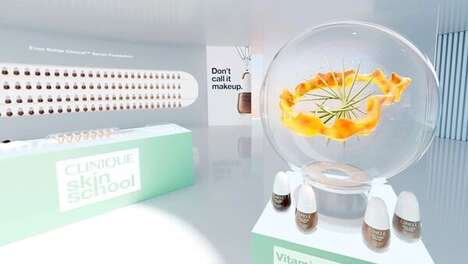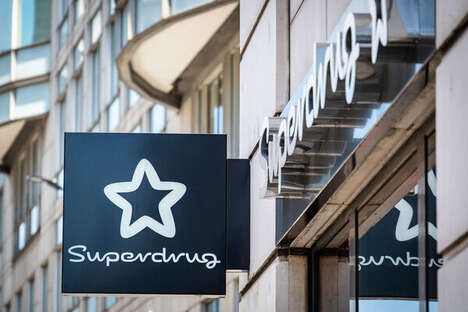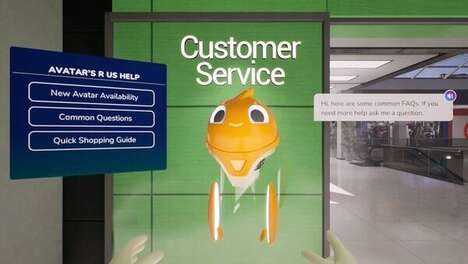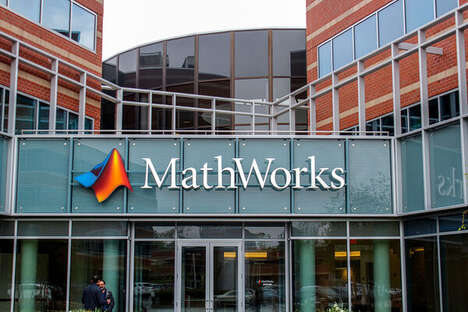Cross-Functional Innovation
David Dombrowski, IDSA, DMI Director, Head of rdpkOPINN at Haleon
 Haleon - Led by its purpose to deliver better everyday health with humanity, Haleon is a world-class portfolio of category-leading global Consumer Healthcare brands, including Sensodyne, Chapstick, Panadol, Advil, Voltaren Theraflu, Otrivin, and Centrum, brands that are trusted by healthcare professionals, customers and people worldwide to improve the health and wellbeing of individuals and their communities. Created from a demerger with GSK, its focus will be 100% on Consumer Health, with the goal of positively impacting the health and lives of billions of people.
Haleon - Led by its purpose to deliver better everyday health with humanity, Haleon is a world-class portfolio of category-leading global Consumer Healthcare brands, including Sensodyne, Chapstick, Panadol, Advil, Voltaren Theraflu, Otrivin, and Centrum, brands that are trusted by healthcare professionals, customers and people worldwide to improve the health and wellbeing of individuals and their communities. Created from a demerger with GSK, its focus will be 100% on Consumer Health, with the goal of positively impacting the health and lives of billions of people.rdpkOPINN - rdpkOPINN (R&D Packaging, Open Innovation) harnesses the power of an extended internal network of makers and experts and external partnerships to deliver scalable solutions in the world of CPG. Comprised of a collective, cohesive group of subject matter experts, its focus is to create a multidisciplinary approach to innovating sustainable packaging solutions to deliver better everyday health with humanity.
With over 35 years of experience in consumer product and packaged goods, David Dombrowski founded rdpkOPINN with one goal in mind: to be a world-class R&D packaging function innovating the future of packaging to deliver better everyday health.
With a focus on early-stage consumer-relevant opportunities, even where there are few-to-no precedents in materials, production, and technology, he and his team collaborate with Marketing, Design, Consumer Research, Formulation, and supply chains to create cross-category packaging innovations that amplify across Haleon’s multiple brands, categories, business units, and regions.
Combining degrees in Mechanical Engineering and Industrial Design, David leads innovation through the lens of the epicenter of what he refers to as The Design Pyramid: where Manufacturing, R&D, Marketing and the Consumer are all equally expressed and considered by Design. At the heart of everything he does, David is driven to create consumer packaging solutions that deliver meaningful, intuitive experiences with empathy.
Having had great opportunities designing for such well known and established companies as Philips-Norelco, Fisher-Price, Schick & Wilkinson Sword, P&G, Pfizer, GSK and currently Haleon. If you’ve shaved with a Schick Quattro or Intuition razor, lathered up with Old Spice or Gillette Body wash, colored your hair with Clairol Root Touch up, taken a Centrum Vitamints or used ChapStick Duo, chances are you’ve experienced his work.
1. What does innovation mean to you?
Great question and one that’s especially relevant with the role I'm playing right now. Quite honestly, innovation means being a catalyst for change and growth. It's that simple and that expansive. I can go down many different roads on what innovation is at the core of it, but for Haleon, it's ultimately about our need to drive innovation, to grow the business.
2. How does your team generate new ideas?
For some context, in January of this year, I launched a new team called rdpkOPINN (R&D Packaging Open Innovation). We strategically positioned ourselves within the R&D Packaging function to deliver innovation through technologies, materials and processes of our packaging and delivery systems.
Having and open innovation mindset embedded in design thinking, we connect and develop internally with our cross functional partners, and we scour the external landscape for new ideas, working with procurement and our supplier network as well as many external technology research agencies.
When it comes to specific processes, we have an internal digital ideation submission portal, an open Power BI portal. Software that brings an excel spreadsheet to life with infographics and other interactive components. All a colleague with and ideas needs to do is fill out a 9-point questionnaire to capture an idea. It’s our main source for collecting and bucketing ideas and ensures everyone can participate in idea generation. We also have an external agency that manages external ideas, which in turn drops ideas into our, searchable, Power BI idea generator.
Our main operation here is to ultimately develop ideas through proof of principle. We will not propose any idea to the company without a measure of feasibility.
3. Do you have any specific rituals for resetting your team to be creative?
To be creative, you need to set a team up for success. I like to think of a team as a diverse matrix of individuals strengths and areas of expertise. Instead of a top-down hierarchy, I like to think of the team as a matrix, centered around leadership. Each team member, pending on the or their project, has the rest of the team to leverage as a team to solve problems and challenges. Leveraging each team members area of expertise.
As a corporation, we want to give ideas space to flourish while keeping feasibility always top of mind. Like any business, there are guardrails to innovation and our biggest challenge is looking at ways to shift them wherever we can.
4. How do you identify trends and what resources does your team use to spot trends and consumer insights?
Trend Hunter is a great tool for that. It's become a catalyst for change and an extension of us. We also work with other agencies like Mintel and Relative Insights. Through these external resources, we identify packaging trends, gather consumer insights, looking at everything from political, economic, social and technological topics while exploring trends from all aspects of our economy.
We harvest external ideas and look for opportunities in industry; from technical, to experiential; sustainable to environmental. It’s that constant pull from our business partners and push from external resources, like Trend Hunter that help us hone in on ideas to develop.
5. What is the biggest challenge you face while innovating?
I've been in a corporate environment for over 30 years and have spent the last 12 at a company where I’m passionate about consumer healthcare and wellbeing. My job is not about consumer research, it's about people research. When I say consumer, I often take myself out of the equation and have to remind myself that it’s about people. A challenge is not getting caught up in every corporate process. We have to embrace different people’s way of thinking.
The biggest challenge is maintaining and managing that fluidity between open innovation and delivering to the business. Whether it’s the pull from within the business or the pull from the outside world.
6. Has there ever been an instance where another industry has influenced innovation at Haleon?
If you ignore other companies and what they're doing, what's on the shelf, what other adjacent businesses are doing, your missing opportunism to innovate. For example, anything we use in packaging usually starts out in the food space. So, we look at the food packaging as well as healthcare, beautycare and look at what they’re doing. We want to make sure when we introduce something, anything, we are doing it as a leader in the industry and that it is qualified, quantified and identified as a wonderful product while meeting every functional and experiential need.
7. What makes an innovative culture and how do you create a culture of innovation?
The first thought that came to mind when I read that question was that you need to separate you and your team from the norms. That's what we did with OPINN. There were so many models within the company that I felt could actually suffocate innovation, so we created a new one centered around an open innovation and open-sourced idea. Keeping our guardrails and feasibility front of mind. We wanted to tackle the big issues and big opportunities even if it seems impossible. When I think of a broader way of innovating, I seem to get the response of “you cannot boil the ocean” and I agree. Although I do believe that there is always room to warm it up a little bit.
I want my team to at least take that first step into the unknown. I'm doing it with full knowledge of how others operate around me, the corporation, the cross-functional partners in R&D, sustainability, marketing and manufacturing, and quality control. Our business is huge and understanding how our packaged products effect our business and consumers (people) is crucial.
8. Looking to the future, how will Haleon continue to be a leader in innovation?
It's about our people, about listening to our colleagues and the people around us and about remembering that we are all people. We're customer driven, but furthermore, we're people driven. It's about our internal people that will continue to make us innovative. Leaders have to adopt that mindset that allows people to contribute and be heard without feeling like they're working in a vacuum. We want to open doors and are part of an open innovation network that encourages internal openness from an internal standpoint, and that's one of the biggest changes we’ve made when it comes to open innovation, which is all about external thinking.
Megatrend Spotlight - Naturality
Naturality in many forms takes hold from the products we deliver from a natural standpoint, you know, clean and natural and less ingredients and not invasive to who we are, what we are and how we live.
When it comes to sustainability, that's the biggest target for our group in packaging. We have two major corporate goals as part of our strategic packaging innovation priorities, the reduction of our virgin-based petroleum plastics, no fossil fuel base, so more circularity, keeping plastics within the loop and not using natural resources anymore.
The other one is “recycle ready”; That our packages are compatible with existing or emerging recycling infrastructures. Can they? We will continue to drive to reduce, and work with supply chain to make sure that we're delivering and communicating to our customers and to consumers that our packaged products are recyclable and trusted to be recyclable.
References: haleon
Featured Articles

Virtual Lab
Virtual innovation labs let consumers test and design products remotely

Social Collabs
TikTok is collaborating with other business in the creative industry

Augmented B2B
As AR technology underperforms in the consumer space, it finds a home in B2B

Metaverse Support
The customer service experience will become more immersive through the metaverse

Mindful Entrepreneurship
Brands release programs that help users learn about and build businesses